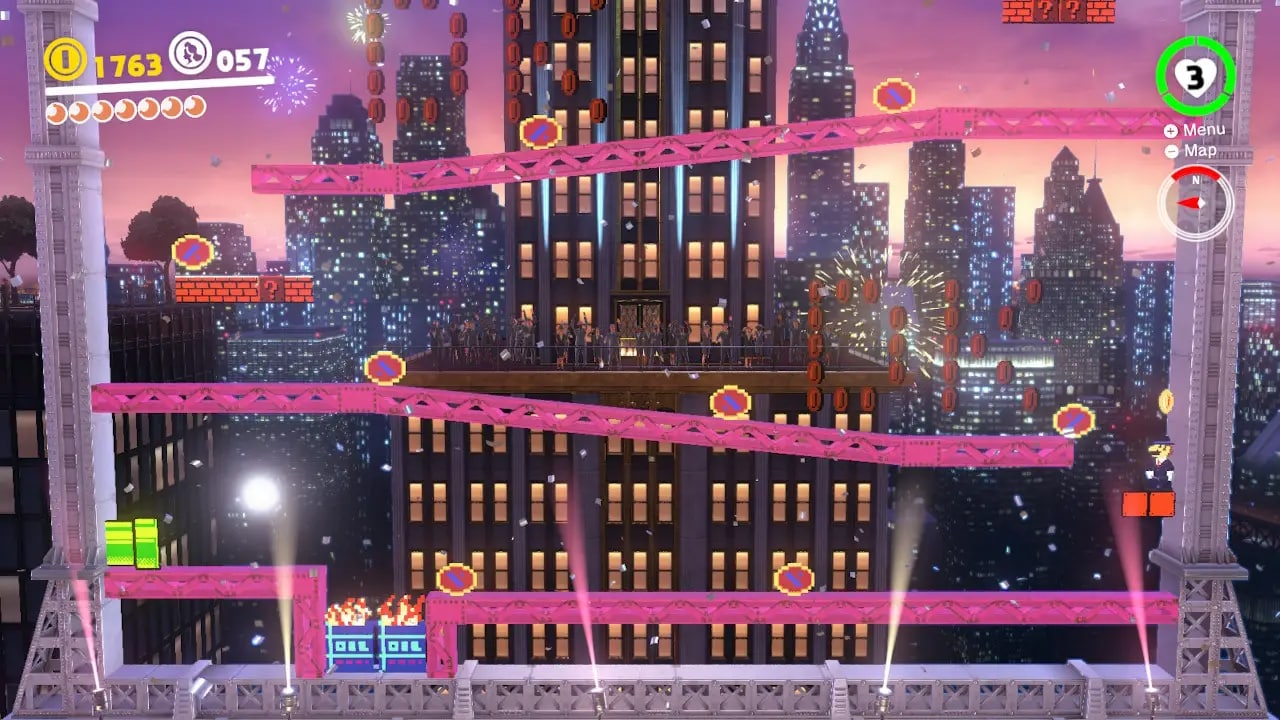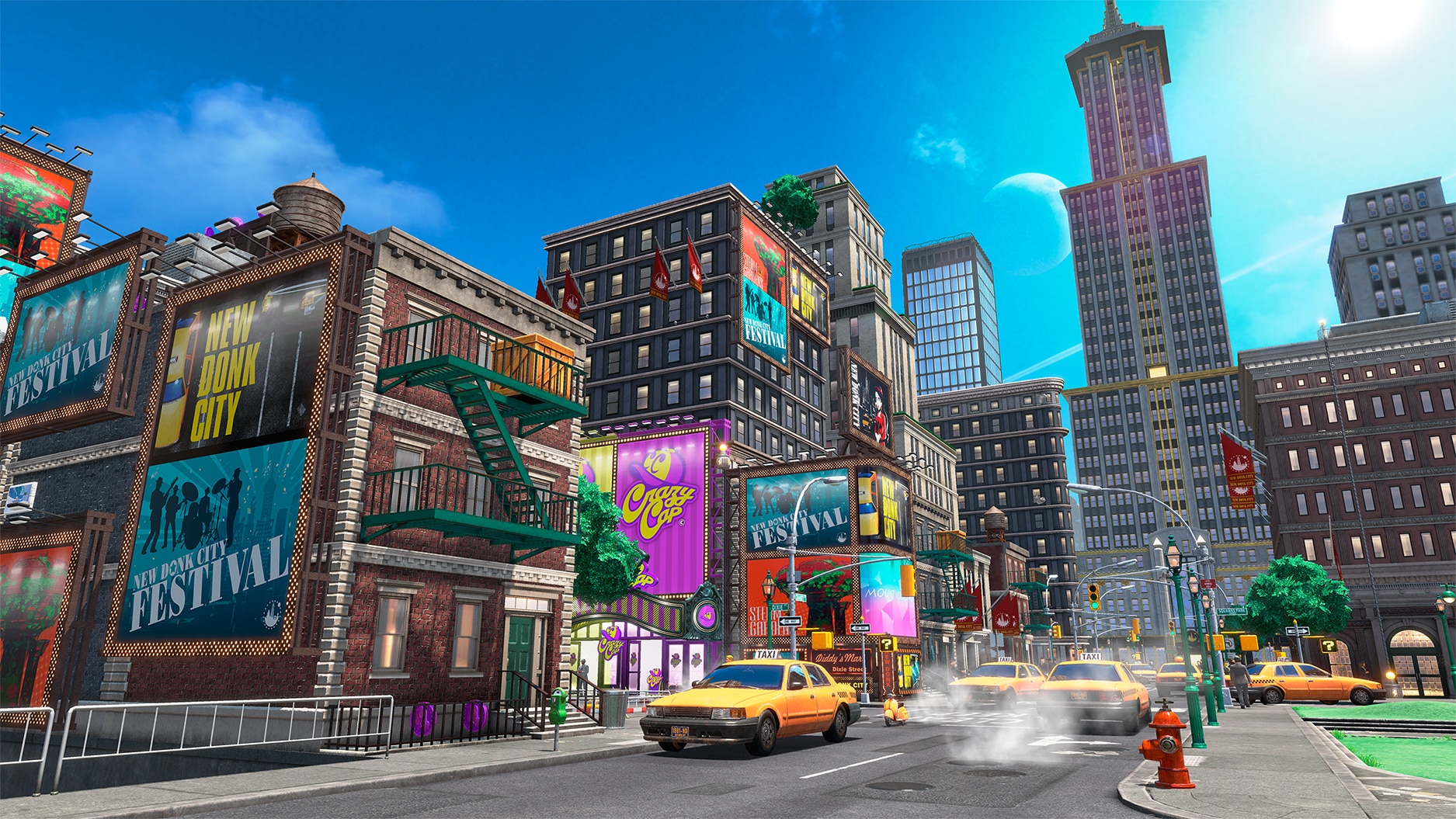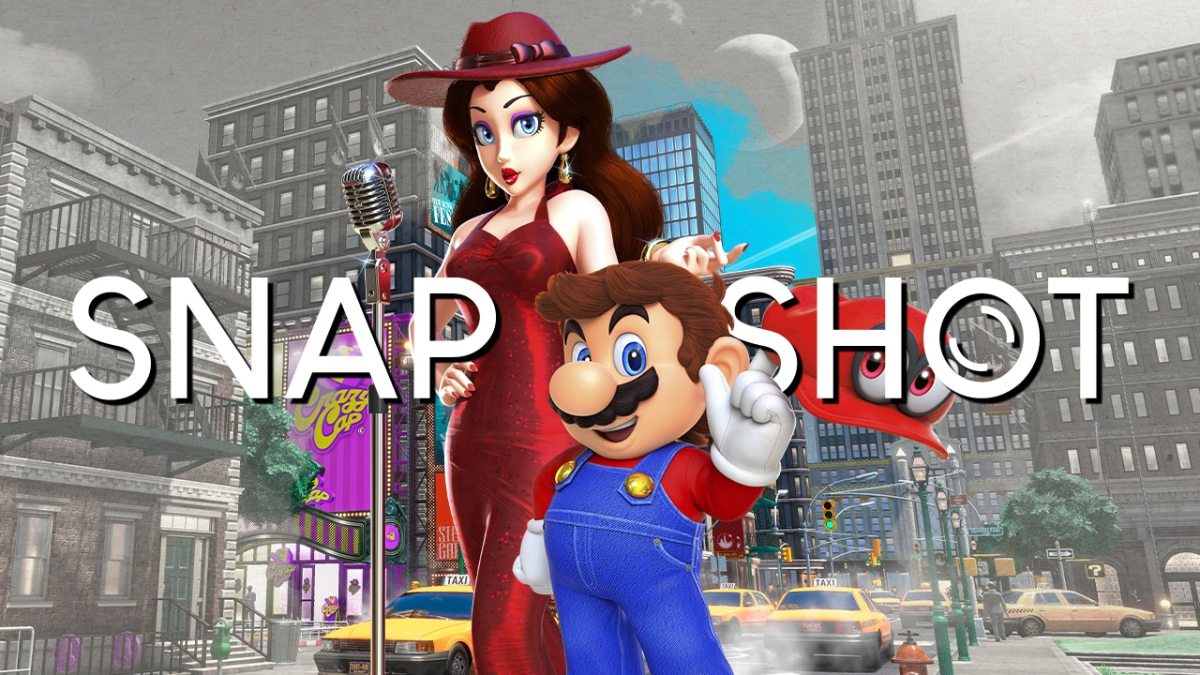There are few video game characters as storied as Mario. Since his introduction as the heroic Jumpman in 1981’s Donkey Kong, Nintendo’s mascot has become synonymous with video games and has been at the forefront of countless evolutions and revolutions. From the home console renaissance of the NES and Super Mario Bros., to the fearless leap into 3D with the Nintendo 64, to our brief-but-powerful love affair with motion control in the Wii’s Super Mario Galaxy, Mario’s seemed to Forrest Gump his way through much of video game history. 2017’s Super Mario Odyssey uses that history to the game’s advantage, delivering one unforgettable moment that celebrates Mario’s future triumphs by looking deep into his past.
A few hours into the Switch’s first core Mario game, you’ll find yourself jet-setting to the aptly named Metro Kingdom, home of New Donk City. You arrive under the cover of a rain-soaked night and have to liberate the besieged metropolis from Bowser’s forces. Once you’ve defeated the enemies, night turns into day, and the citizens flood back out into the streets to continue on with their busy lives. The level transforms into one of the strangest, most entertaining playgrounds ever found in a core Mario game: Towering skyscrapers line streets filled with taxis, parks brimming with activity, and regular-proportioned humans dressed up in suits and fedoras on their way to work. Its verisimilitude to the real world makes it an utterly surreal level for a Mario game, which is where much of its power and lasting appeal comes from.

While exploring New Donk City you’ll eventually come across a familiar face in Mayor Pauline, whom we first met back in 1981 as the damsel in distress in Donkey Kong. She tasks you with finding various members of a band that could come together and put on a performance as part of a festival to commemorate the history of New Donk. Of course you oblige, and so you venture off throughout the city in search of these musicians. Once you gather them all together, they’ll jam out to a rendition of the memorable World 1-1 theme from the original Super Mario Bros.
With the band reunited and power restored to the city, Pauline invites you to be the guest of honor in a level titled “A Traditional Festival!” You’re transported to the rooftops as day turns to night and the entire city is blanketed in the familiar neon glow of purple construction beams. It’s a sight that’s become video game iconography since its introduction nearly four decades ago.
Confetti rains from the sky, and as you make your way towards a warp pipe, you’ll pass various citizens who shout out words of encouragement in your general direction. “This festival tells the story of our city’s beginnings,” one yells. “Jump, man, jump!” another cheers. By this point it’s clear to anyone familiar with Nintendo’s history that what you’re about to play through is a festival commemorating the events of the original Donkey Kong — where we first met Mario when he was Jumpman, Pauline before she held office, and New Donk City perhaps when it was just Donk City.

With that, Mario goes through the warp pipe and transforms into his iconic 8-bit sprite. What follows is a series of simple 2D platforming stages that are plastered on the sides of the buildings throughout the city. The challenges here are simple and familiar — jump over flaming oil drums, avoid the rolling barrels that tumble downward through the world, and slowly climb your way to the top of the structure.
Where these levels were tense and challenging and the essence of Donkey Kong, they’re presented here as celebratory and full of life. Though it’s possible to fail, I doubt most players do. The entire city cheers you on as you make your way to the final screen, which of course contains a classic 2D representation of Donkey Kong himself sitting as king atop the tower. Once you finally reach him and knock him off his throne, you’re turned back into 3D Mario and Mayor Pauline rewards you with a Multi-Moon. A nice reward, but the trip down memory lane you just experienced was the real prize in all of this.
As you make your way through this entire challenge, Pauline and the band you helped her form cheer you on by performing “Jump Up, Super Star!,” a song unlike any other in Super Mario history, but one that’s become synonymous with Odyssey. It’s a big band, jazz-inspired anthem with lyrics that serve to reflect on Mario’s past, present, and future adventures. Like everything else in New Donk City, it’s bizarre and out of place and yet somehow just works as a backdrop for this whole strange journey.

Sure, it’s mighty interesting to have the single-screen settings of Donkey Kong recontextualized to more accurately mirror the scope and grandeur of its inspiration in King Kong’s New York City. But more than that, this stage serves as a celebration of how far not only Mario and Nintendo have come over the past four decades, but the medium of video games as a whole. It takes a moment that could originally only be experienced by inserting a quarter into a monolithic arcade cabinet and commemorates it using a device capable of producing entire worlds in the palm of your hand. In less than half a century, Jumpman has gone from being restricted to the X and Y axis to having the freedom to explore every inch of New Donk City.
“A Traditional Festival!” isn’t all-that long — like any classic Mario stage, you can breeze through it in just a few minutes. But what it manages to accomplish in that short amount of time is absolutely astounding. It’s a furnace of joy, reflection, and celebration of a character, game series, and medium as a whole. It’s the idea of Mario distilled down into its very essence in a way that only Nintendo could accomplish.






Published: May 12, 2020 11:00 am